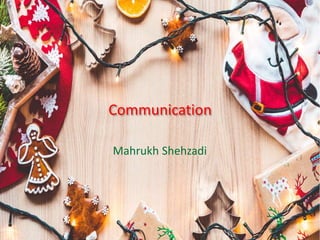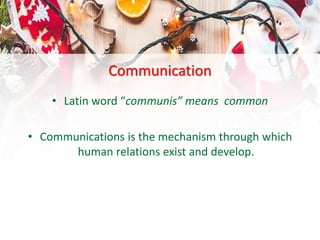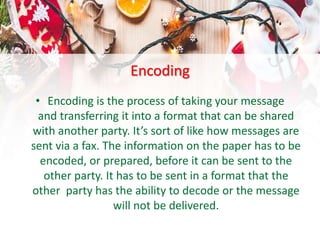This document discusses the process of communication. It defines communication as the exchange of ideas, information, or messages through a medium. The communication process involves a source encoding a message and sending it through a channel to a receiver. The receiver then decodes the message. Feedback is an important part of the process to determine if the message was understood. Context, such as the environment and relationships between parties, also impacts communication. Effective communication requires understanding all parts of the process.




















